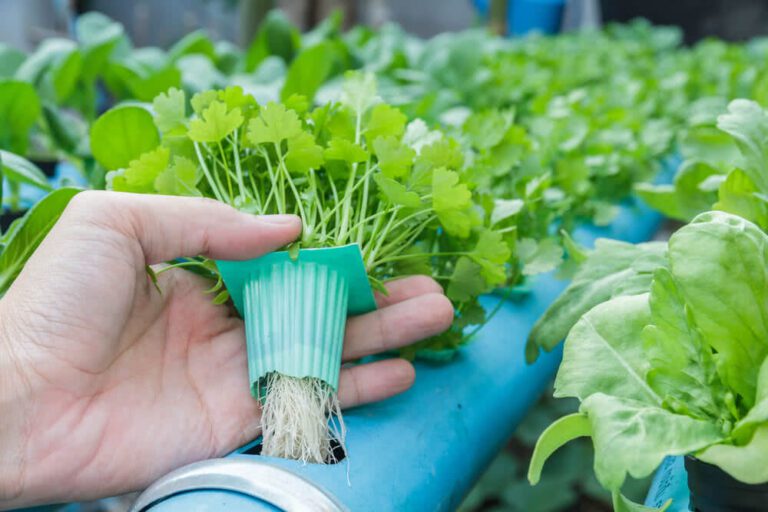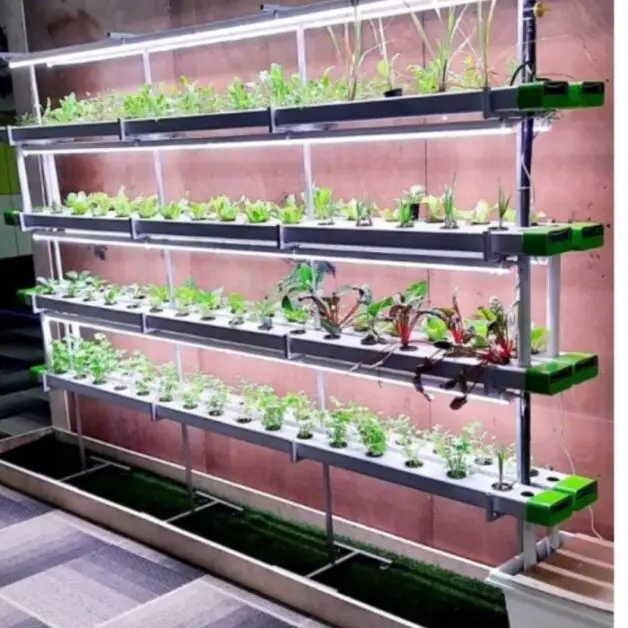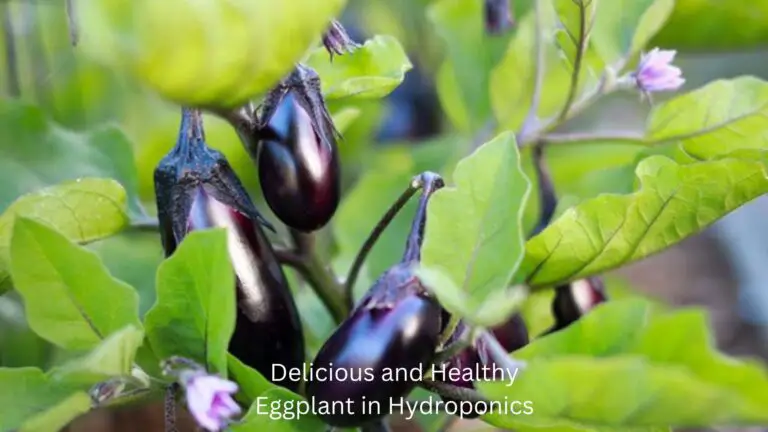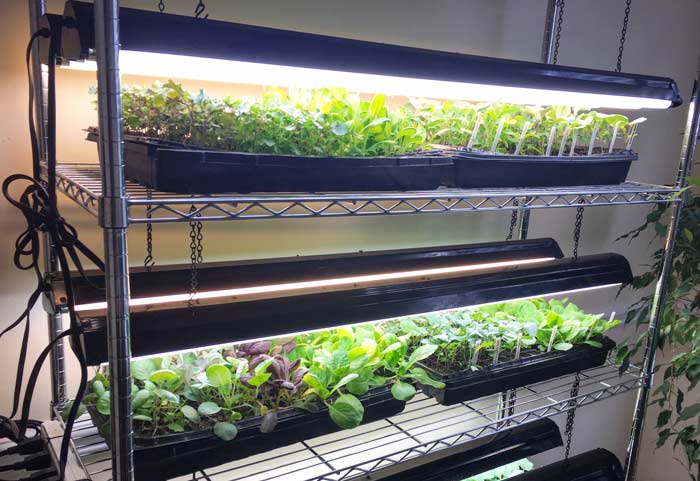DIY Cloning Machine for Plant Propagation: How to Build Cloning Machine
Table of Contents
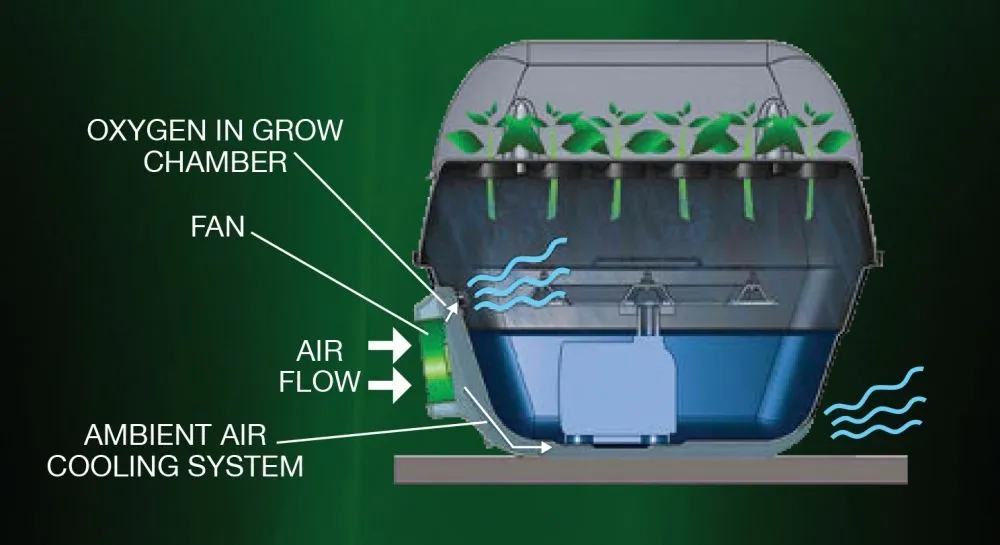
I. How to Build Cloning Machine: Understanding Plant Propagation through Cloning
Plant propagation through cloning is a fascinating and effective technique that allows gardeners and plant enthusiasts to reproduce exact copies of their favorite plants. By taking cuttings from a parent plant and encouraging them to develop roots, it is possible to create new plants that are genetically identical to the original. Through cloning, we can propagate plants with desirable traits, such as flower color, fruit size, or disease resistance, ensuring the preservation and proliferation of these characteristics.
Why is cloning such a valuable tool for gardeners? Firstly, it allows for the rapid and efficient multiplication of plants. Rather than waiting for seeds to germinate and grow, cloning allows us to produce new plants that are already well-established and thriving. This is particularly useful for rare or slow-growing species, as it enables us to conserve and share them more widely. Moreover, cloning also ensures that the subsequent plants will retain the exact traits of the parent, guaranteeing consistency and predictability in our gardens. Whether we want to replicate a stunning flower or preserve a delicious fruit variety, cloning provides an effective means of doing so. By understanding the principles and techniques of plant propagation through cloning, we can unlock a world of possibilities in our gardens.
II. The Importance of Cloning for Gardeners and Plant Enthusiasts
Cloning is an essential technique that has revolutionized plant propagation for gardeners and plant enthusiasts alike. By cloning plants, gardeners can produce exact replicas of their favorite plants, maintaining their desirable traits and characteristics. This process allows for the preservation of unique varieties and ensures a consistent supply of high-quality plants.
One of the key benefits of cloning is the ability to reproduce plants that may be difficult or slow to grow from seeds. Some plant varieties have low germination rates or require specific conditions for successful seed propagation. By cloning these plants, gardeners can bypass the uncertainties and challenges associated with seed germination, ensuring a higher success rate in their cultivation efforts. Furthermore, cloning enables the reproduction of large quantities of plants in a shorter time frame, providing gardeners with a steady supply for various purposes such as landscaping, selling, or sharing with fellow enthusiasts.
III. Essential Components and Materials for a Cloning Machine
A successful cloning machine requires several essential components and materials to ensure optimal propagation results. First and foremost, a sturdy and well-designed cloning chamber is crucial. The chamber should be made of durable materials such as high-quality plastic or stainless steel to prevent any potential leakage or damage.
Additionally, an effective cloning machine must have a reliable aeroponic or hydroponic system in place. This system provides the necessary moisture and nutrient delivery to promote root development and overall plant growth. Hydroponic systems, for instance, utilize a nutrient-rich solution that is continuously circulated to nourish the clones, while aeroponic systems provide a fine mist of nutrient solution directly to the roots.
Furthermore, a cloning machine should be equipped with ample lighting to stimulate photosynthesis and encourage proper plant growth. High-intensity fluorescent or LED lights are commonly used, as they provide the specific spectrum of light needed for optimal cloning results.
Lastly, a cloning machine requires proper ventilation and air circulation. Exhaust fans and vents are essential in maintaining the ideal humidity and temperature levels. This ensures that the clones receive a constant supply of fresh air and helps prevent the buildup of excess moisture, which could lead to mold or other unwanted pathogens.
By incorporating these essential components and materials into a cloning machine, gardeners and plant enthusiasts can create a controlled and conducive environment for successful plant propagation. The next step is to understand the step-by-step process of building a cloning machine, which will be discussed in the following section.
IV. Step-by-Step Guide to Building Your Own Cloning Machine
Building your own cloning machine can be a rewarding and cost-effective way to propagate your plants. By following this step-by-step guide, you can create a functional cloning machine that will aid in the successful propagation of your favorite plant varieties.
1. Begin by gathering all the necessary materials: a large plastic container or tray, a clear plastic dome or lid, an air pump with tubing, air stones, a water pump, net pots or cloning collars, a lighting system, and a timer. It is important to ensure that all materials are clean and free from any contaminants.
2. Next, set up the water pump and air pump inside the container. The water pump will provide the necessary circulation for the cloning machine, while the air pump will oxygenate the water and stimulate root growth. Connect the air stones to the air pump using the tubing, and place them evenly throughout the container.
3. Install the net pots or cloning collars into the container. These will hold the cuttings in place while they develop roots. Make sure to space them evenly to allow for proper airflow and space for each cutting.
4. Position the lighting system above the container. Depending on the type of plants you are cloning, you may need specific lighting requirements such as fluorescent or LED lights. Set the timer according to the recommended light cycle for your specific plant species.
5. Finally, cover the cloning machine with a clear plastic dome or lid. This will create a humid environment for the cuttings, promoting faster root development. Ensure that the dome or lid is properly sealed, allowing for minimal air exchange.
By following these steps and maintaining proper care and hygiene, you can create your own cloning machine and propagate your plants with ease. The next section will discuss the importance of hygiene and sterilization in the cloning process, ensuring successful and healthy propagation.
Below is a table outlining the general steps and components needed How to Build Cloning Machine:
| Step | Description |
|---|---|
| Materials and Tools | Gather materials such as a plastic container with a lid, neoprene collars, a submersible pump, air stones, cloning gel, a cloning tray, and a grow light. Tools include a drill and tubing. |
| Container Setup | Drill holes in the container lid for neoprene collars. Place neoprene collars into the holes to hold the plant cuttings securely. |
| Reservoir Installation | Install a submersible pump in the bottom of the container. Connect tubing to the pump for water circulation. Position air stones in the container for oxygenation. |
| Cloning Tray Placement | Place a cloning tray with plant cuttings on top of the neoprene collars. Ensure that the cut ends of the clones are submerged in the nutrient-rich water solution. |
| Nutrient Solution | Fill the container with a cloning solution or nutrient-rich water. Ensure it contains the necessary nutrients to support the early growth of plant clones. |
| Humidity Dome | Optionally, use a humidity dome to maintain high humidity around the clones, promoting successful root development. |
| Lighting Setup | Install a grow light above the cloning tray to provide adequate light for photosynthesis. Adjust the light schedule for optimal growth conditions. |
| Temperature Control | Maintain an appropriate temperature range (usually 72-80°F or 22-27°C) to facilitate root development. Monitor and adjust as needed. |
| Regular Monitoring | Check the water level, nutrient concentration, and overall health of the clones regularly. Make adjustments as necessary to ensure optimal conditions. |
| Rooting Hormone Application | Apply rooting gel or hormone to the cut ends of the plant clones before placing them in the neoprene collars. This promotes the development of healthy roots. |
| Cloning Machine Location | Place the cloning machine in a clean and controlled environment, minimizing external factors that could impact the cloning process. |
How to Build Cloning Machine: It’s important to note that specific details and requirements may vary based on the type of cloning machine being built and the plants being propagated. Always refer to the instructions provided with the equipment and consider the specific needs of the plant species you are cloning.
V. How to Build Cloning Machine: Ensuring Proper Hygiene and Sterilization in the Cloning Process
Proper hygiene and sterilization are essential in the cloning process to ensure successful propagation and prevent the spread of diseases or pathogens. How to Build Cloning Machine: By following specific protocols and practices, gardeners and plant enthusiasts can minimize the risks and maximize the success rates of their cloning endeavors.
First and foremost, it is crucial to maintain a clean and sterile environment throughout the cloning process. This involves regularly sanitizing all equipment and tools involved, such as cutting implements, propagation trays, and containers. Using a mixture of bleach and water or a commercial disinfectant solution, thoroughly clean all surfaces to eliminate any potential contaminants. Additionally, it is advisable to wear disposable gloves and change them frequently to minimize the transfer of bacteria or fungi from one plant to another.
Furthermore, it is important to sterilize the cloning medium to provide a favorable environment for root development. This can be achieved by using sterile water, such as distilled or purified water, and treating the cloning trays or cubes with a solution of hydrogen peroxide or an antifungal agent. Avoid using tap water, as it may contain minerals or chemicals that can inhibit root growth or promote the growth of pathogens.
By incorporating these measures into your cloning process, you can significantly increase the chances of successful propagation and maintain the health and vigor of your plant clones. Ensuring proper hygiene and sterilization not only promotes the growth of healthy roots but also safeguards your entire garden or plant collection from potential diseases or infections.
VI. Choosing the Right Cloning Medium for Successful Propagation
Choosing the right cloning medium is crucial for successful propagation of plants. The cloning medium provides the necessary nutrients and environment for the plant cuttings to develop roots and eventually grow into healthy plants. There are several different types of cloning mediums available, each with its own advantages and disadvantages.
One commonly used cloning medium is rockwool. Made from melted volcanic rock, rockwool provides excellent water retention and aeration properties. It is also pH neutral, which is important for optimal nutrient uptake by the plant. Another benefit of rockwool is its ability to retain moisture while still allowing oxygen to reach the roots, promoting healthy root development. However, it’s worth noting that rockwool can be difficult to handle and requires careful soaking and pH adjustment before use.
Another popular choice for a cloning medium is peat moss. Peat moss has excellent water retention capabilities and is rich in organic matter, providing a great environment for root development. It is also relatively inexpensive and readily available. However, peat moss has a slightly acidic pH, so it may be necessary to adjust the pH before use. Additionally, the extraction of peat moss can have negative environmental impacts, so it’s important to consider sustainable alternatives.
In addition to rockwool and peat moss, there are other cloning mediums available, such as coco coir, perlite, and vermiculite. These mediums all have their own unique properties and benefits, so it’s important to research and choose the one that best suits your specific needs and preferences.
Overall, the choice of cloning medium will depend on factors such as the type of plant being propagated, the available resources, and personal preference. It’s important to experiment with different mediums to find the one that consistently produces the best results for your specific plants and growing conditions. Investing time and effort into choosing the right cloning medium will greatly increase the chances of successful propagation and ultimately lead to a flourishing garden.

VII. How to Build Cloning Machine: Temperature and Humidity Control for Optimal Cloning Results
Temperature and humidity control are crucial factors in achieving optimal cloning results. Maintaining the right temperature and humidity levels creates an ideal environment for root development and overall clone health.
When it comes to temperature, the optimal range for cloning is typically between 70-80°F (21-27°C). This range helps promote root growth and minimizes the risk of pathogens. Higher temperatures can lead to excessive transpiration, while lower temperatures can slow down root development. It is important to monitor the temperature closely and make adjustments as needed to ensure the clones are kept in the ideal range.
In addition to temperature, humidity plays a critical role in cloning success. A humidity level of around 70-80% provides the necessary moisture for the clones to develop roots effectively. Higher humidity helps reduce moisture loss through transpiration and encourages root growth. However, excessive humidity can lead to issues like mold and fungal diseases. Therefore, it’s important to strike a balance by monitoring humidity levels regularly and adjusting them accordingly to avoid potential problems.
By carefully controlling both temperature and humidity, gardeners and plant enthusiasts can create a favorable environment that promotes successful cloning. The ability to maintain these optimal conditions will significantly increase the chances of root development and overall clone health, ultimately leading to successful propagation. So, it’s worth investing time and effort into ensuring temperature and humidity control for maximizing cloning results.
VIII. Lighting Requirements for Cloning Machines
Lighting is a crucial factor in ensuring successful cloning in a cloning machine. The right lighting provides the necessary energy for the plants to photosynthesize and grow. When it comes to cloning machines, the two main types of lighting commonly used are fluorescent and LED lights.
Fluorescent lights, particularly T5 grow lights, have been a popular choice among gardeners and plant enthusiasts for their affordability and effectiveness. These lights produce a spectrum that is suitable for the early stages of plant growth, including cloning.
How to Build Cloning Machine: They emit less heat than other lighting options, reducing the risk of damaging delicate clones. Additionally, T5 lights are energy-efficient, making them an environmentally-friendly choice.
On the other hand, LED lights have gained significant attention in recent years due to their numerous advantages. LED lights are highly energy-efficient, consuming less power and generating less heat compared to other light sources. This efficiency reduces operating costs and the risk of overheating in the cloning machine. LED lights also offer a wide spectrum of light, allowing gardeners to adjust the lighting to the specific needs of the clones and achieve optimal growth.
IX. The Role of Hormones in How to Build Cloning Machine
Hormones play a crucial role in the cloning process and root development of plants. These naturally-occurring substances regulate various physiological processes, including cell division, elongation, and differentiation. In the context of cloning, hormones are used to stimulate the growth of roots on plant cuttings, allowing them to develop into independent plants.
One of the most commonly used hormones in cloning is auxin, specifically indole-3-butyric acid (IBA), which promotes root formation. When applied to the base of a cutting, IBA stimulates cell division in the cambium layer, resulting in the formation of new roots. Additionally, another hormone, cytokinin, can be used to influence cell division and promote shoot growth. By carefully manipulating the levels and ratios of these hormones, gardeners and plant enthusiasts can optimize the success rate of their cloning endeavors.
X. Techniques for Cutting and Preparing How to Build Cloning Machine for Propagation
When it comes to propagating plants through cloning, understanding the techniques for cutting and preparing clones is essential for ensuring successful propagation. The first step in this process is selecting a healthy and vigorous plant from which to take the cuttings. It is important to choose a plant that is free from diseases, pests, and any signs of stress. Additionally, selecting a plant that is in the vegetative stage of growth will increase the chances of successful rooting.
Once a suitable plant has been chosen, the next step is to prepare the tools and materials needed for cutting the clones. It is crucial to use clean and sharp pruning shears or scissors to make a clean cut just below a node, which is the point where a leaf or stem connects to the main plant. The cutting should be approximately 4-6 inches long, and the lower leaves should be removed to prevent excessive transpiration. After cutting, the clone should be immediately placed in a container filled with water or a cloning solution to prevent wilting and air embolism. This solution should contain the necessary nutrients and hormones to promote root development. By following these techniques for cutting and preparing clones, gardeners and plant enthusiasts can increase their chances of successful propagation and enjoy a thriving garden filled with genetically identical plants.

XI. Transplanting How to Build Cloning Machine: Best Practices for Successful Establishment
Transplanting clones is a critical step in the propagation process that requires careful attention and technique to ensure successful establishment. One of the best practices for transplanting clones is to prepare the receiving medium adequately. This means selecting a suitable growing medium, such as a well-draining soil or a specialized nutrient-rich substrate for hydroponic systems. The pH of the medium should also be adjusted to the appropriate range for the particular plant species being propagated. Providing the right conditions for the roots to grow and develop is essential for the clones to establish successfully.
Furthermore, How to Build Cloning Machine: it is crucial to handle the clones with care during the transplanting process. When removing the clones from the propagation medium, it is important to handle them gently to avoid damaging the delicate roots and shoots that may have formed. Using clean and sterilized tools, such as a sharp knife or pruners, to carefully cut and separate the clones from the parent plant helps minimize any potential damage. Once the clones are removed, it is advisable to place them immediately into the prepared receiving medium, securing them into place and ensuring the roots are fully covered. Providing proper support to the clones, such as using stakes or providing a gentle misting, can help them maintain stability during the establishment phase. By following these best practices, gardeners and plant enthusiasts can increase the chances of successful transplanting and ensure healthy growth and development of their clones.
XII. Troubleshooting Common Issues in How to Build Cloning Machine and Propagation
When working with cloning machines and propagation, it is not uncommon to encounter certain issues that can hinder the success rate of the process. One common problem is the presence of mold or fungal growth on the cuttings or in the cloning medium. This can lead to the decline and death of the clones if not addressed promptly. To prevent this, it is crucial to maintain proper hygiene and sterilization throughout the cloning process. Regularly cleaning and disinfecting the cloning machine, using sterile tools and equipment, and ensuring that the cloning medium is free from contaminants are essential steps in preventing mold and fungal growth.
Another issue that gardeners may encounter is the lack of root development in the clones. Without a healthy root system, clones will struggle to take up water and nutrients, leading to stunted growth or even death. There are several factors that can contribute to poor root development, such as improper hormone application, insufficient humidity, or incorrect temperature settings. To troubleshoot this issue, it is important to review the cloning process from start to finish and identify any potential areas of improvement. Adjusting hormone application techniques, providing adequate humidity levels, and ensuring the cloning machine maintains the optimal temperature range can greatly improve root development in clones.
XIII. Tips and Tricks for Maximizing How to Build Cloning Machine Success Rates
To maximize cloning success rates, there are several tips and tricks that gardeners and plant enthusiasts can employ. Firstly, it is crucial to select healthy donor plants for cloning. Choose plants that display vigorous growth, have disease-free leaves, and exhibit strong root systems. By starting with strong genetic material, you increase the likelihood of successful propagation.
Another important aspect is ensuring proper hygiene and sterilization throughout the cloning process. Clean and sterilize all equipment, including the cloning machine, trays, and cutting tools, before and after each use. This helps eliminate any potential pathogens that could hinder the rooting and growth of the clones. Additionally, maintaining a clean and sterile environment reduces the risk of contamination and diseases, ultimately improving the success rates of cloning.
In this video you can know How to Build Cloning Machine
How to Build Cloning Machine: Can I use any type of plant for cloning?
In general, most types of plants can be cloned successfully. However, some plants may be more difficult to clone than others. It is recommended to choose healthy and disease-free plants for cloning to maximize success rates.
How long does it take for clones to root?
The time it takes for clones to root can vary depending on the plant species and environmental conditions. On average, it can take anywhere from 1-3 weeks for clones to develop roots.
Do I need to use hormones for cloning?
While hormones are not always necessary for cloning, they can greatly improve success rates. Using rooting hormones can stimulate root development and increase the chances of successful propagation.
What is the ideal temperature and humidity for cloning?
The ideal temperature for cloning is typically between 70-75°F (21-24°C). Humidity levels should be kept around 70-80% to prevent excessive moisture loss from the clones and promote root growth.
Can I clone plants without a cloning machine?
Yes, it is possible to clone plants without a cloning machine. However, using a cloning machine provides a controlled environment and increases the chances of successful propagation.
How often should I clean and sterilize my cloning machine?
It is important to clean and sterilize your cloning machine before each use to prevent the spread of diseases and ensure optimal hygiene. Regular maintenance and cleaning will help maximize cloning success rates.
What lighting requirements are necessary for a cloning machine?
Cloning machines typically require a specific light spectrum, such as fluorescent lights or LED grow lights, to provide the right amount and quality of light for optimal cloning results. Consult the manufacturer’s guidelines for specific lighting requirements.
Are there any common issues that can occur during the cloning process?
Yes, common issues in cloning machines and propagation include mold or fungal growth, wilting or drooping clones, and failed root development. Troubleshooting these issues can help improve cloning success rates.
Can I transplant clones directly into the garden?
It is generally recommended to transplant clones into a controlled environment, such as a greenhouse or indoor garden, before moving them into the garden. This allows the clones to acclimate and establish roots before facing outdoor conditions.
Are there any additional tips for maximizing cloning success rates?
How to Build Cloning Machine: Yes, some additional tips include maintaining a clean and sterile environment, using high-quality cloning mediums, providing adequate nutrition and hydration for the clones, and monitoring their progress closely. Regular monitoring and adjustments can greatly improve cloning success rates.


